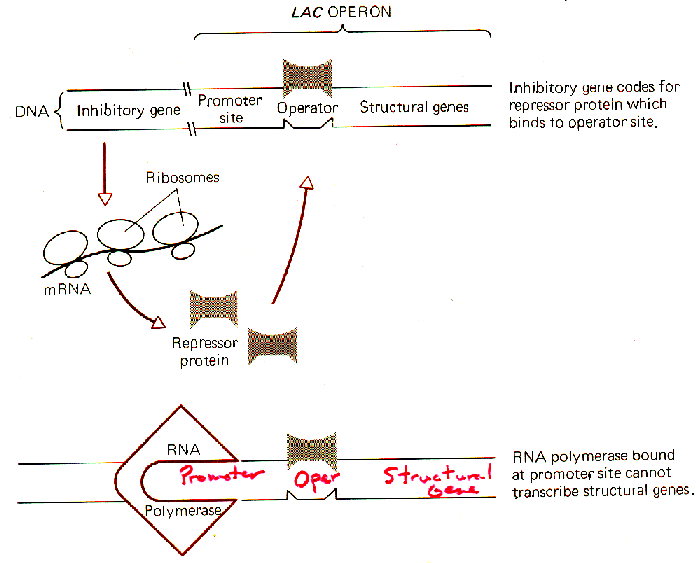Ch. 16
Negative Feedback Mechanism & The
Lac Operon
The lac operon is that part of the bacterial
genome that is responsible for the production of enzymes that convert the disaccharide
(double) sugar lactose into the monosaccharides glucose and galactose. It typically
would consist of 3 different parts of DNA. These include the promoter site where
RNA Polymerase binds to the DNA, the adjacent operator site to which the inducer
binds, and the structural gene that makes the enzyme to break down lactose.
The operator site is between the promoter and structural gene.
A regulatory protein, known as a gene repressor protein,
is produced by the bacteria to prevent transciption of the gene that produces
the enzyme. When the gene repressor protein is bound to the operator site (see
diagrams below), this prevents RNA polymerase from moving past the promoter
site and thus initiating transcription of the structural gene (making of mRNA).
When lactose is present in large amounts, it binds to the repressor and changes
its shape so it can't fit onto the operator. However, when the concentration
of lactose within the bacterium is very low, there is then very little of it
present which can bind to the repressor. The repressor is not deactivated and
so it continues to bind to the operator and transcription is blocked!

The dark gene on the left is the regulator gene. It produces the repressor
protein which is always present in the nucleus. At low concentrations of
lactose, the repressor is allowed to bind to the operator (seen above middle).
This then prevents RNA polymerase from binding to the DNA molecule and transcribing
the gene which makes the enzyme that breaks down lactose.
 The above diagram shows
essentially the same thing!
The above diagram shows
essentially the same thing!
Long & Slichter


The above diagram shows essentially the same thing!